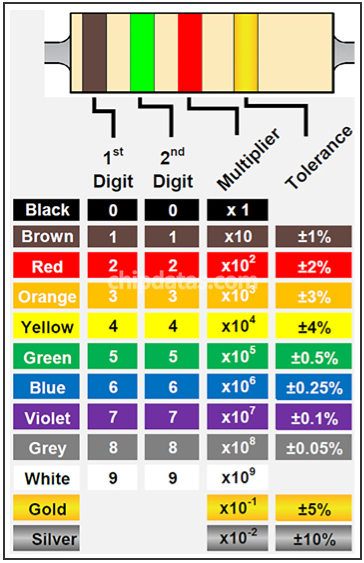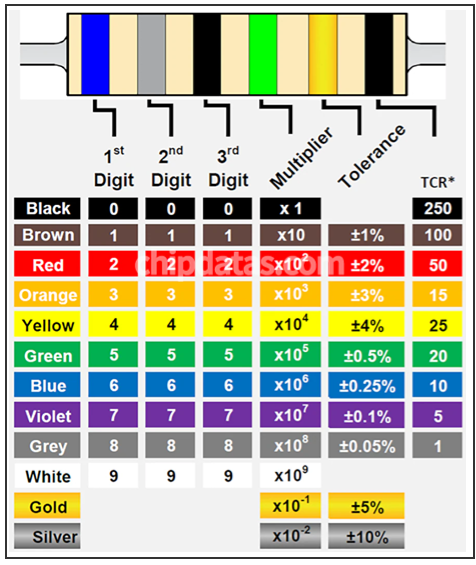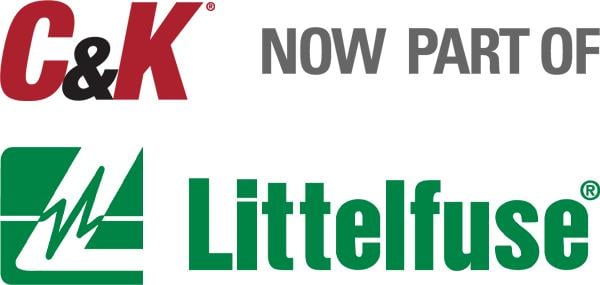Powerful Protection from Payment to Delivery
Secure and Reliable Payment
Money Back Guarantee
Shipping and Delivery
After-Sales Service
Enter the order reference number received by email to check the status or make payment.
Understanding Resistor Color Code: A Comprehensive Guide to Color Bands
The resistor color system, which has been in use for many years, is still widely used today and has been officially codified by the IEC Standard 60062. This standard also incorporates the RKM code, which is a shorthand system used to identify resistance and capacitance values on small components where decimal points may be hard to discern. Here at TE, we rely on these systems to accurately identify various electronic components.
IEC 60062 Resistance Value Shorthand
Our resistor data sheets utilize the RKM shorthand codes to represent resistance values. This standardized system uses the letter "R" in place of the decimal point for resistance values without prefixes. For instance, 1R0 is shorthand for a 1.0 Ω resistor. For resistor values with only one significant figure like 2 Ω, 2R0 is used. For resistance values in kiloohms (kΩ), a "K" replaces the decimal point. Thus, 1K5 identifies a 1.5 kΩ or a 1,500 Ω resistor. Similarly, "M" represents MΩ and "G" represents GΩ. The table below provides several examples of the RKM codes for selected resistance values.


Resistor Color Codes
To determine the resistance value of a small resistor, you can refer to the IEC 60062 color code, which uses 3, 4, 5, or 6 colored bands depending on the level of precision required. To read the code, start with the band closest to the end of the resistor and work your way towards the other end. Note that the spacing between the multiplier and tolerance bands is slightly wider than between the digits and multiplier, so pay attention to this when interpreting the code.
3-Band Resistors Color Code for Resistors
3-band resistors have a tolerance of ±20% and are often used in hobbyist projects or when the exact resistance value is not crucial. For instance, a 1R0 (1 Ω) resistor with 3 color bands will have brown, black, and gold stripes. Its actual resistance value can vary between 0.8 Ω and 1.2 Ω due to the tolerance.
_289bdde94bbbaed3f65cc5b1ab391439.png)
4-Band Resistors Color Code for Resistors
If a higher precision than ±20% is needed, a 4-band resistor is used instead, with an extra band indicating the tolerance. For example, a 1K5 or 1500 Ω resistor with a tolerance of ±5% will have brown, green, red, and gold stripes. The actual resistance value can deviate by up to ±75 ohms from the nominal value due to the tolerance.
_541470819de7a0470ff19e8948c3f3d1.png)

5-Band Resistors Color Code for Resistors
For even more precise applications that require additional significant figures, 5-band resistors can be used to specify a 3rd digit. For example, a 270K (270,000 Ω) resistor will have a red, violet, black, and orange band that identify the value. If a silver band is present, it indicates that the value will fall between 243K Ω and 297K Ω.
_536ecb14d1cb6c1324c58878366d9aad.png)
6-Band Resistors Color Code for Resistors
High precision resistors are designed to have a specific temperature coefficient of resistance (TCR), which measures the impact of temperature on the resistance value relative to 25°C (77°F). The resistance change is typically measured in ppm/°C, where ppm represents the change in resistance per Ω of rated value. For example, a high precision resistor with a value of 68 MΩ, a tolerance of ±5%, and a temperature coefficient of resistance of 250 ppm/°C is a great example of such a resistor.
_9ddd59b3878160a61938e912933e8e4b.png)

Recent Posts








Company
About UsContact UsTerms & ConditionsPrivacy StatementPayment,Shipping & InvoiceRefund & Return PolicyWarranty PolicyFrequently asked questionHolidays for Chinese Mid-Autumn Festival and National Day in 2023


















